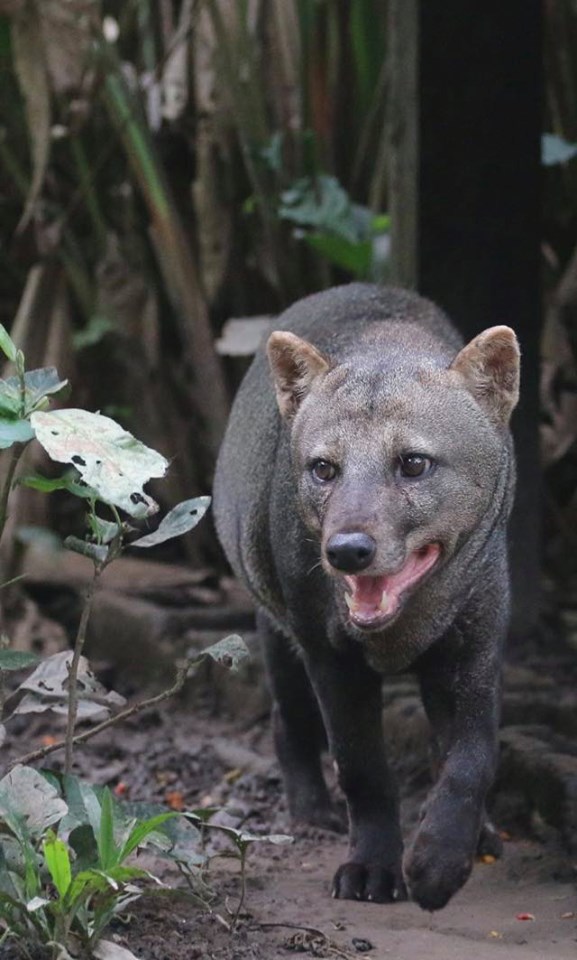Short-eared dog
(Atelocynus microtis)

Description
The short-eared dog (Atelocynus microtis), also known as the short-eared zorro or small-eared dog, is a unique and elusive canid species endemic to the Amazonian basin. This is the only species assigned to the genus Atelocynus. It has many names in the local languages where it is endemic, such as: cachorro-do-mato-de-orelha-curta in Portuguese, zorro de oreja corta in Spanish, nomensarixi in the Chiquitano language, and uálaca in Yucuna. Other names in Spanish are zorro ojizarco, zorro sabanero, zorro negro. The short-eared dog can be found in the Amazon rainforest region of South America (in Peru, Bolivia, Brazil, Colombia, Ecuador and possibly Venezuela). There is a single report of "three slender, doglike animals" of this species sighted in the Darien region of Panama in 1984 by German biologist Sigi Weisel and a native Embera nation Panamanian; this rare species' presence in Panama is possible because of "the continuous mass of forest habitat that covers this region". It lives in various parts of the rainforest environment, preferring areas with little human disturbance. It lives in both lowland forests known as Selva Amazónica and terra firme forest, as well as in swamp forest, stands of bamboo, and cloud forest. It is a solitary animal and prefers moving in trees away from human and other animal interactions. The short-eared dog has short and slender limbs with short and rounded ears. It has a distinctive fox-like muzzle and bushy tail. Its paws are partly webbed, helping adapt it to its partly aquatic habitat. Its fur ranges from dark to reddish-grey, but can also be nearly navy blue, coffee brown, dark grey, or chestnut-grey to black, and the coat is short, with thick and bristly fur. It has a somewhat narrow chest, with dark color variation on the thorax merging to brighter, more reddish tones on the abdominal side of the body. This wild dog is mainly a carnivore, with fish, insects, and small mammals making up the majority of its diet. An investigation led in Cocha Cashu Biological Station in Peru into the proportions of different kinds of food in this animal's diet produced the following results: fish 28%, insects 17%, small mammals 13%, various fruits 10%, birds 10%, crabs 10%, frogs 4%, reptiles 3%. This species has some unique behaviors not typical to other canids. Females of this species are about one-third larger than males. The excited male sprays a musk produced by the tail glands. It prefers a solitary lifestyle, in forest areas.
Taxonomic tree:







